Imagine having to cook dinner for a friend’s parents without getting to know them first.
You could end up making sugar-filled desserts for diabetics. Or worse, serving meat to vegans.
Marketing without a customer profile is essentially just that.
A leap in the dark.

Most business owners have big dreams: exponential growth, market-leading companies as clients, and millions in revenue.
But before your company can make it big, you need a plan for how you’re going to build a solid customer base.
That’s where a customer profile comes in handy. It makes it easy for you to tailor campaigns to the specific behaviors, pain points, and needs of people who’re most likely to buy your products and services.
In this article, we’ll cover everything you need to know about a customer profile – including what it is, how you can benefit from it, and how to create one for your business.
Post Contents



What Is a Customer Profile?
A customer profile (sometimes referred to as consumer profile) is a document that lists pain points, interests, buying patterns, and demographic characteristics of a company’s customers.
The document is presented in a manner that makes it look like a description of a real person, with a full name and an image or avatar. Below is an example:
→ Click Here to Launch Your Online Business with Shopify
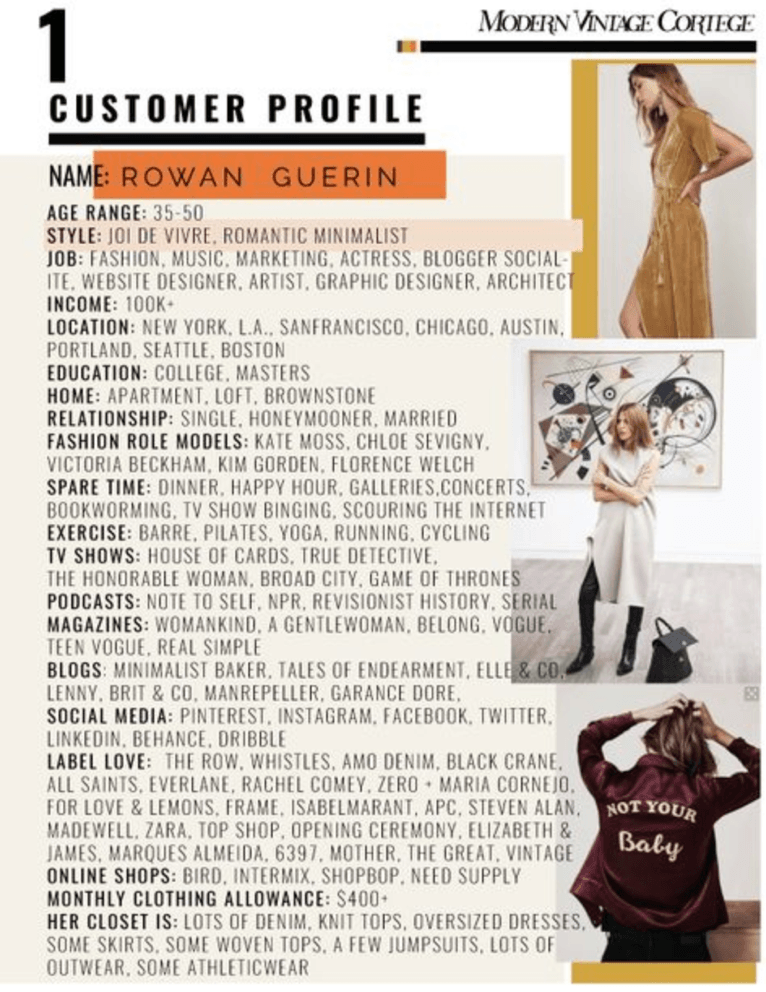
Building a customer profile can help you run better marketing campaigns that, in turn, increase your profits. With all that useful information, you can decide which strategy to implement and which ones to avoid.
For example, if the profile says your ideal customer loves engaging with brands on Instagram, then you should probably focus on improving your Instagram marketing.
It’s worth mentioning that a customer profile for a B2C company would look different than that of a B2B firm. The latter defines the ideal customer using firmographics, such as:
- Company size
- Revenue
- Industry
- Location
So if you sell to other companies, you’ll need to find out how big they are, what sector they are in, and how much they make on average in a year.
Advantages of Customer Profiling
You can’t be all things to all people, but you can create a customer profile to learn more about your ideal customer, who they are, and what they do. This can help you in the following ways.
Targeted content
Let’s say you’re a nutritionist and you send out a weekly newsletter to your clients that includes dietary recommendations.
If your customer profile reveals that young gym-goers between 20 and 30 are your main customers, you can tailor your content in a way that augments their lifestyle and preferences.
For example, you can feature a recipe for a low-calorie pizza or burger in your email newsletter, as millennials love eating these food items.
Cheaper ads
With an ideal customer profile on your screen, you’ll know the exact characteristics your target audiences share. Such insights help improve your marketing because you can use the information to actively target precise consumer segments.
For example, if your customer profile notes that potential buyers use iPhones to browse and shop online, you can include their device preferences in audience targeting when creating Facebook ads for your business
Put simply, it’s much easier to run cheaper ads when you know a thing or two about who you want to reach.
Customer loyalty
When you’re aware of your customers’ likes and dislikes, you can engage with them on a personal level. This should improve their overall experience with your company and build loyalty towards your business.
According to Customer Experience Matrix, 79 percent of consumers are more loyal to a business that understands them. Considering that a 7 percent increase in loyalty can boost company profits by as much as 85 percent, taking steps to enhance the customer experience will help improve your bottom line.
As you uncover the desires and pain points of your target audience, you can personalize their experiences and also provide better resources to make them loyal to your brand.
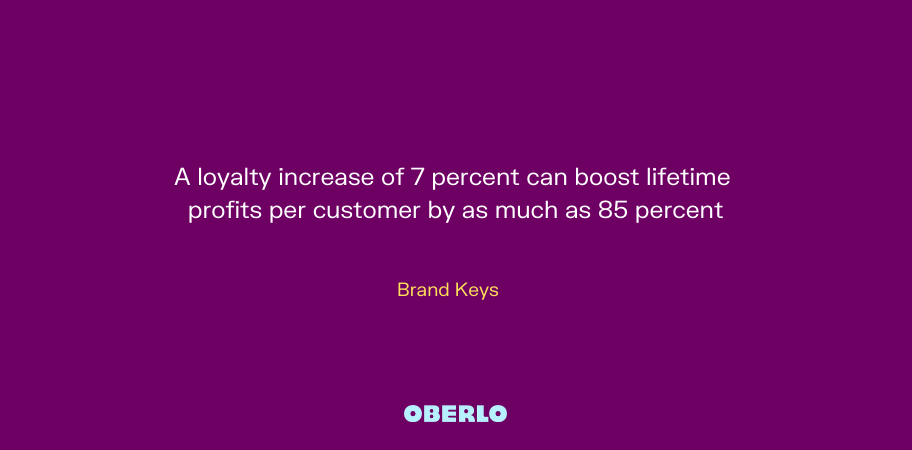
Improved Account-Based Marketing
If your company uses an account-based marketing (AMB) strategy, you’ll need to find ways to personalize the communication you have with each client.
This requires putting time into learning about every individual client, which can be difficult for a small business.
Fortunately, you can create a customer profile to identify the traits of your target accounts and ABM techniques to deliver highly personalized campaigns based on those particular attributes.
Here’s an example: Suppose your target account is a midsize construction company with 25 employees, and customer profiling reveals the owner likes to read case studies to learn more about other businesses. You can write a case study of your own on how you have helped companies that fit this profile increase their revenue. Personalized content is as good as any other tailored strategy for boosting ROI.
Product/market fit
In many cases, companies have multiple consumer groups that have different behaviors, tastes, and preferences. If you’re one of such companies, you need to know what each consumer group wants and how they want it.
You can generate a lot of sales by running promotions and discounts, but at some point, you’ll need to segment your customers and tailor your offerings to match their needs. By creating a customer profile for each audience group, you’ll have the information you can use to tailor products to different segments.
In case of an ecommerce product, you might offer different features based on whether a senior or a young adult has ordered your item. For example, it can be a good idea to send a basic instruction manual with products that are going out to older customers.
What Is the Difference Between A Customer Profile and A Buyer Persona?
Marketers often use ‘customer profiles’ and ‘buyer personas’ interchangeably, but they are two different terms that serve different purposes.
A customer profile represents the type of person who would be a good fit for your product or service. It tends to include demographics, lifestyle attributes, and behavioral attributes of the individual.
On the other hand, a buyer persona is a hypothetical representation of customers you want to reach based on qualitative data points like aims, motivations, pain points, etc.
So while both a customer profile and a buyer persona represent the type of customer you’d like to serve, a customer profile allows you to dig deeper into their demographics and other attributes. The insights can help you find new prospects and tailor marketing campaigns to customers.

How to Create a Customer Profile in 5 Steps
Don’t just rely on guesswork when deciding what to include in your customer profile.
Instead, take a systematic approach to gathering information and data on your ideal customers.
By understanding things like a customer’s needs, shopping behaviors, and more, you can figure out the best ways to reach this target audience.
Here are five simple steps for creating a customer profile.
1. Identify Your best customers
The first step is to find and analyze people who are in love with your products or services.
From your existing customer base, list down five to ten clients who’re getting the most value out of your offerings – value in terms of how you are helping them achieve their objectives.
Some questions to ask yourself to find your best customers are:
- Which customers have been with my company the longest?
- Who’s been referring my business to their friends and family?
- Which customers have I featured in my case studies?
If you’re a new company and don’t have a whole lot of clients to work with, think about the type of people who would get the most out of your product or service.
If you’re selling ergonomic table stands, for instance, you can consider computer users to be one of your best customers.
2. List their notable attributes
Once you’ve compiled a list of your best customers, write down all their important attributes. The main attributes usually relate to:
Demographics
Demographic attributes reveal the age, gender, race, ethnicity, and religion of your ideal customers. With this information at your fingertips, it becomes easy to build products or services that they’d find useful.
For instance, a chic female clothing store should only market its products to young female audiences who have an interest in buying stylish apparel.
Psychographics
Psychographics offer a deeper understanding of your customers’ beliefs and values. They include things like:
- Activities: Netflix, exercise, baking, etc.
- Lifestyle: Extrovert, stay indoors, socialize thrice a week, etc.
- Values: No alcohol, moderate views, etc.
- Aspirations: Work-life balance, grow following on Instagram, etc.
- Pain points and fears: Low-quality product, hidden charges, etc.
The psychographic part of your customer profile helps you create and market products that speak to the way people think, their pain points, and their emotional triggers.
Socioeconomics
Most ideal customer profiles also feature attributes related to education, income, neighborhood, and household size. But you can even research what socioeconomic class your best customers fall into.
The main socio-economic classes are:
- Upper class
- Middle class
- Lower middle class
- Skilled worker class
- Unemployed class
Your chances of meeting your customers’ expectations should significantly improve when you have a clear picture of their socioeconomic attributes.
Geographic segmentation
Do your customers live in a tax-free state? What’s the culture like in their town or city? Geographic segmentation helps you answer these and other location-specific questions about your customers.
This information can be particularly valuable if you sell items that are subject to differences in regional taxes, population, or climate.
A car company, for instance, would be able to use geographic segmentation to determine the type of vehicles they should produce in greater quantities.
If most of its best customers reside in rural areas, it’d make sense for the company to make cars with thick and heavy tires that allow customers to navigate bumpy roads with ease.
Firmographics (if it’s a B2B customer profile)
As we mentioned earlier, B2B customer profiles tend to include firmographics. This is where you write down the industry, size, geography, total employees, number of customers, and annual revenue of your clients.
If you’re using a CRM tool to track the sales for your company, you should be able to source most of these firmographics with ease.
Crunchbase is also a goldmine for researching company-related data. The platform offers filters such as categories, number of employees, and total funding amount to help you gain insight into the firmographics of a particular company.
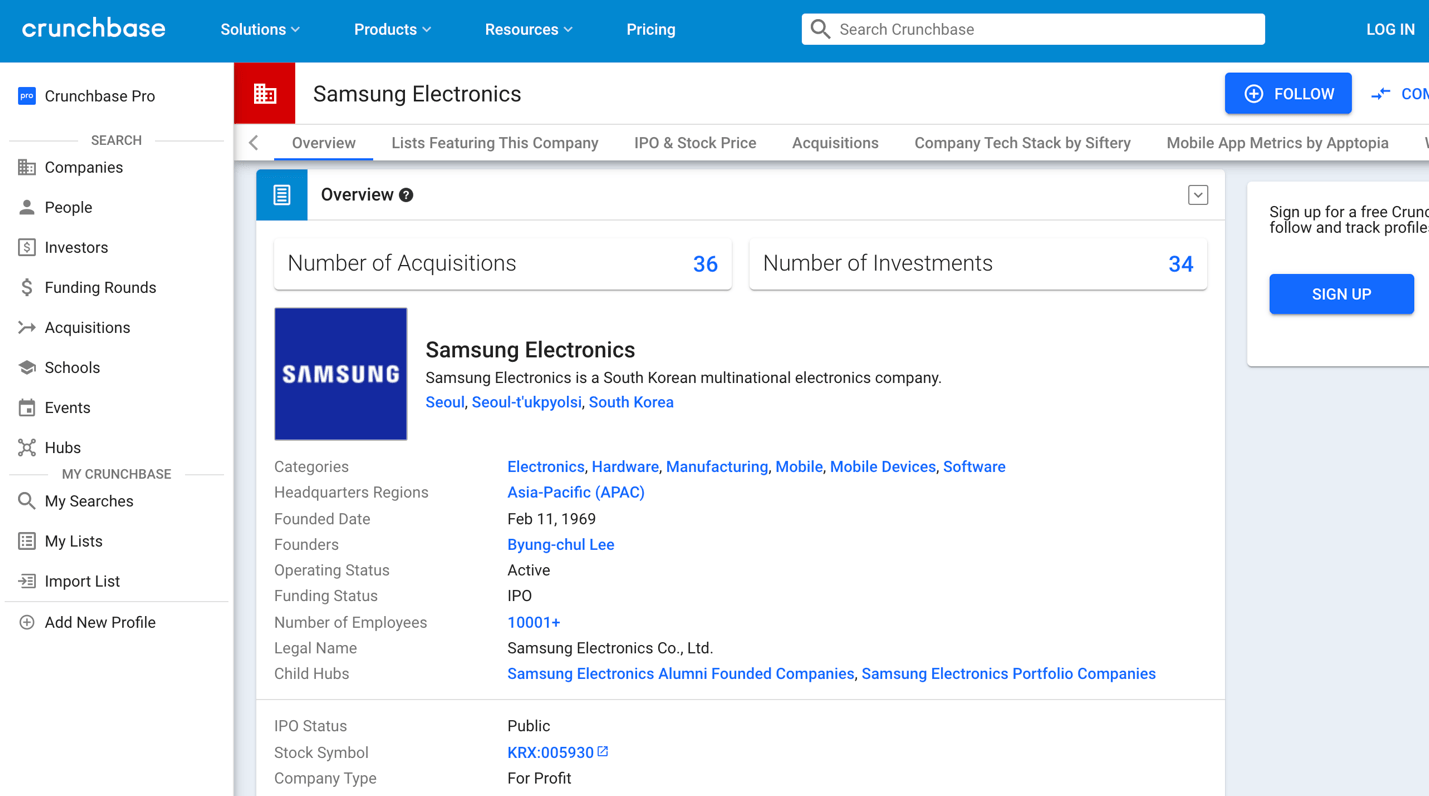
3. Survey them
As you’re writing out the above attributes, you’ll realize you have more knowledge about some customers than about others.That’s where surveys can help fill the gaps.
You can use tools like SurveyMonkey or Google Forms to create surveys on specific customer traits . Below are some ideas for the type of questions to include in your survey:
Demographic-related questions
You should keep in mind that these are very personal and sensitive questions.
As a result, you have to pay special attention to the way you structure them. One idea is to give consumers multiple answers to choose from for some demographic questions.
Here are a few examples you can replicate:
- What is your nationality?
- In what year were you born?
- From 1944 to 1964
- From 1965 to 1979
- From 1980 to 1994
- From 1995 onward
- What is your gender?
- Male
- Female
- Other (please specify)
- What is your relationship status?
Socioeconomic-related questions
These questions also ask for private information, so it’s best to use multiple-choice answers here as well. Below are a few examples to give you an idea of which questions to ask in order to gain socioeconomic data:
- What is your employment status?
- Employed full-time
- Employed part-time
- Self-employed
- Retired
- Unemployed
- What is your highest educational qualification?
- What is your household’s annual income?
- $14,999 or less
- $15,000 to $34,999
- $35,000 to $49,999
- $50,000 to 74,999
- $75,000 to $99,999
- $100,000 or more
Psychographic-related questions
Since there are so many potential answers to these types of questions, you can ask open-ended questions like the ones below:
- What hobbies do you enjoy?
- What do you value most in life?
- What factors affect your decision to buy a product or service?
Geographic-related questions
These are generally easy-to-answer questions about a consumer’s geographical location, such as:
- In what region are you situated?
- How would you describe the weather in your area?
- Are you exempt from paying taxes in your region?
Firmographic-related questions
Again, the answers to these questions are not complex or sensitive, so you can use open-ended questions like:
- How many years has your company been in business?
- How many workers are currently employed by your company?
- What industry does your company specialize in?
- How many branches does your company have?
4. Extract data from your online channels
Your online channels are a goldmine of customer data, so tap into them to learn more about your audience. Each marketing channel can reveal new insights on who your customers are, what topics they are interested in, and what they’re sharing on the web.
Analyze your:
- Email Data – Reveals how often your customers engage with your brand and what type of content (newsletter, blog links, plain emails, etc.) gets them to read your messages.
- Web Analytics – Shows the content and products they are interested in and gives insight into how they navigate your webpages.
- Social Media Analytics – Determines the platforms they follow you on and what type of content they like to share and comment on.
With that, you have gained tons of valuable insights to inform your customer profile.
5. Fill in your customer profile template
Now that you’ve surveyed your top customers, covered all their attributes, and gained a complete overview of why they give you their business, compose your research into one single document – this will serve as your customer profile.
If you’re of how to structure the document, list the information in the following order:
- Give your customer a name
- Put a face to their profile
- Add their demographic information
- List their psychographic and socioeconomic attributes
- Include a quote from the customer
- Add their goals, pain points, and motivators
- Add the type of communication channels they would prefer to use
When creating a customer profile, the level of detail you go into is entirely up to you. But we recommend keeping it simple to avoid analysis paralysis with the insights.
Examples of Customer Profile [Templates]
While you can create a customer profile document from scratch, it’s always easier to use a template.
Many different customer profile templates are available to help you in creating powerful user personas. Just fill in the fields with the details you have. You can also remove or add fields based on the data you and your business have available.
Even if you don’t prefer templates, these customer profile examples are a good starting point to give you an idea of what real-world profiles look like and the type of information you can include in your document.
So, here are a few customer profile templates:
Research & Discovery’s Customer Profile Template
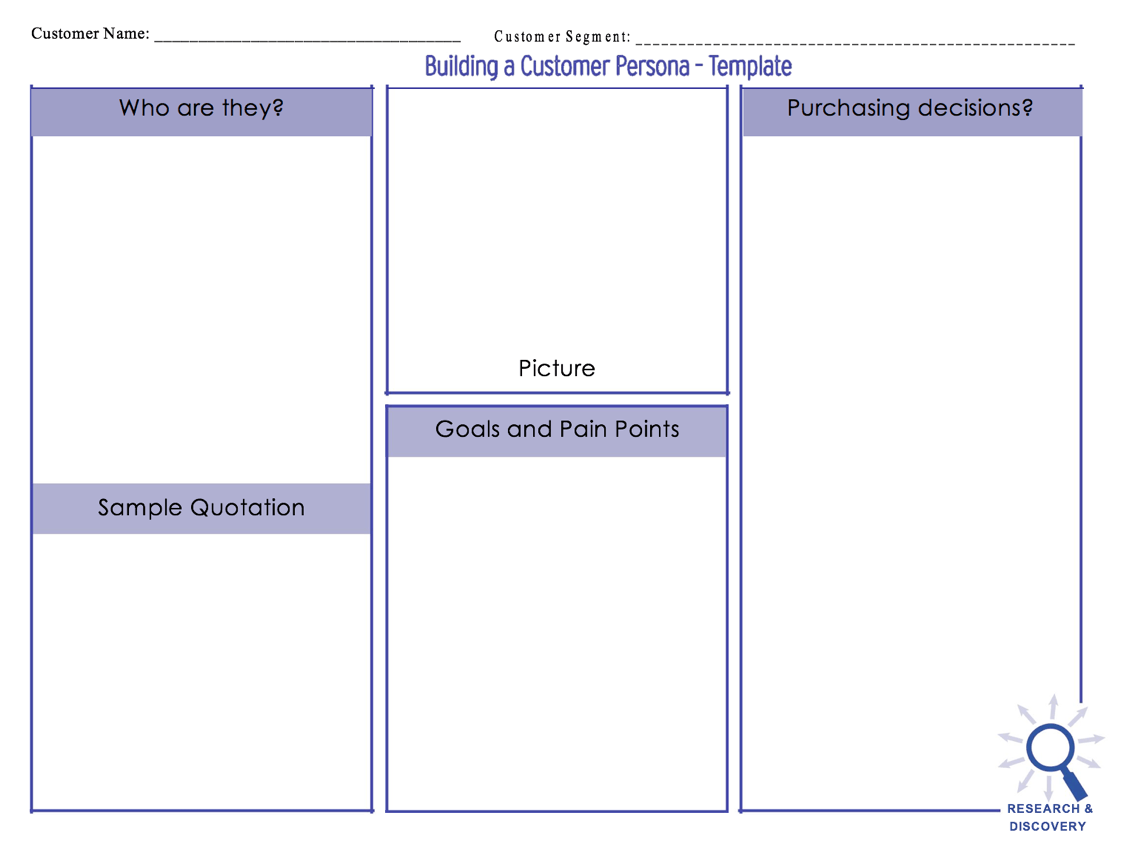
Research & Discovery offers a simple template that’ll cover most of your ideal customers’ attributes.
Minimalist.Business’ Customer Profile Template
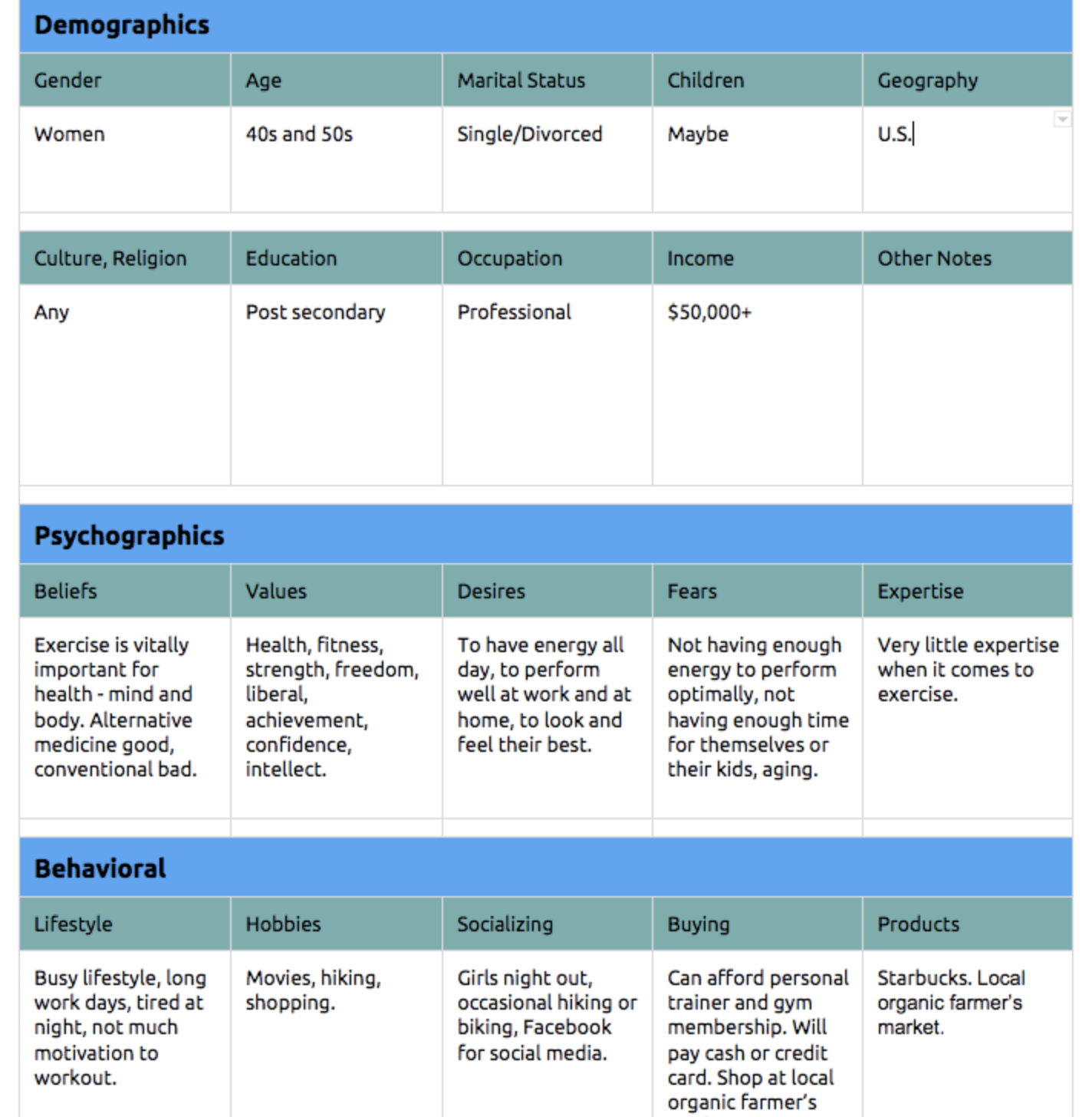
Though a barebones document, Minimalist.Business’ customer profile template lists all the important attributes.
Red Caffeine’s Customer Profile Template
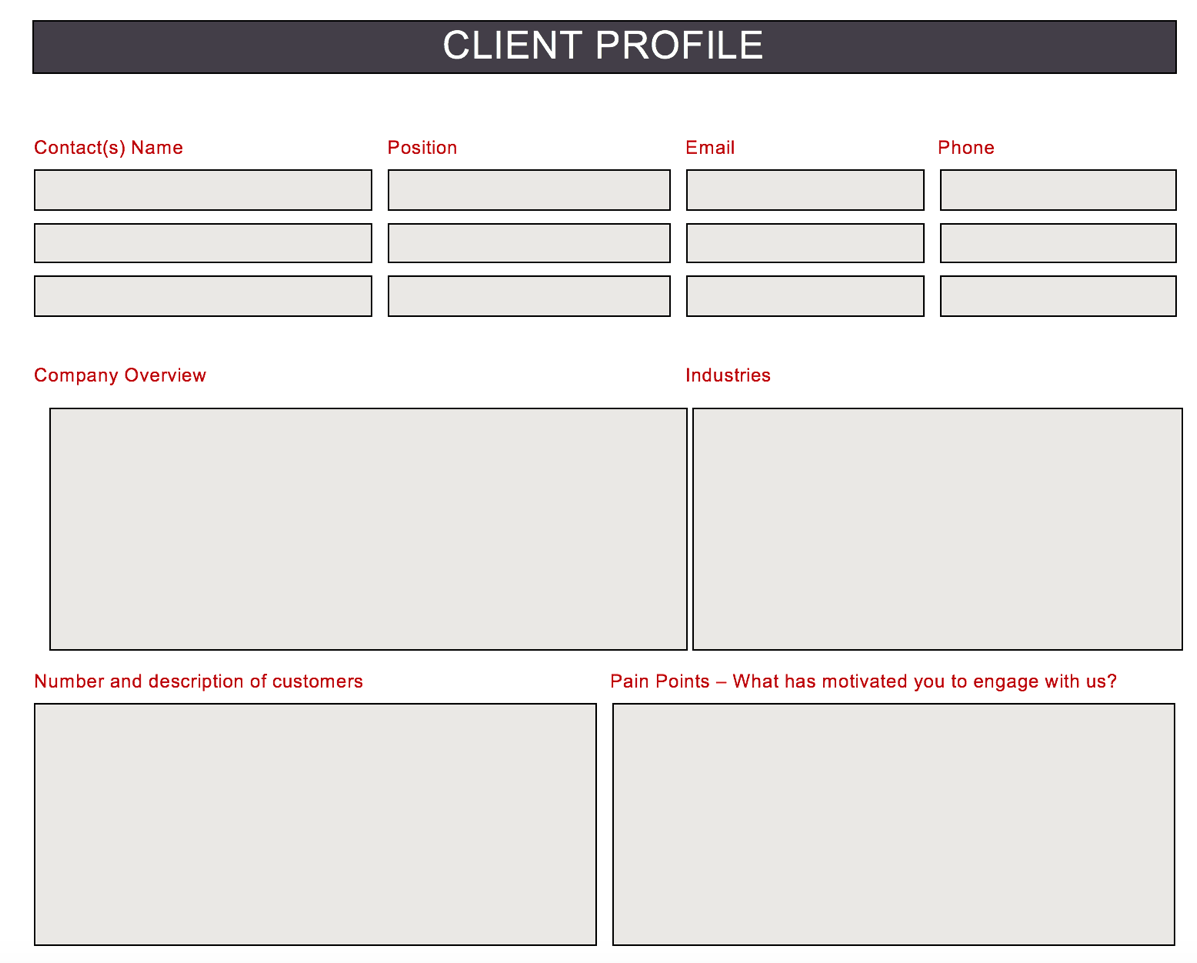
Red Caffeine’s customer profile template is ideal for B2B companies because it covers most of the firmographics required for effective outreach and client nurturing.
Creately’s Customer Profile Template
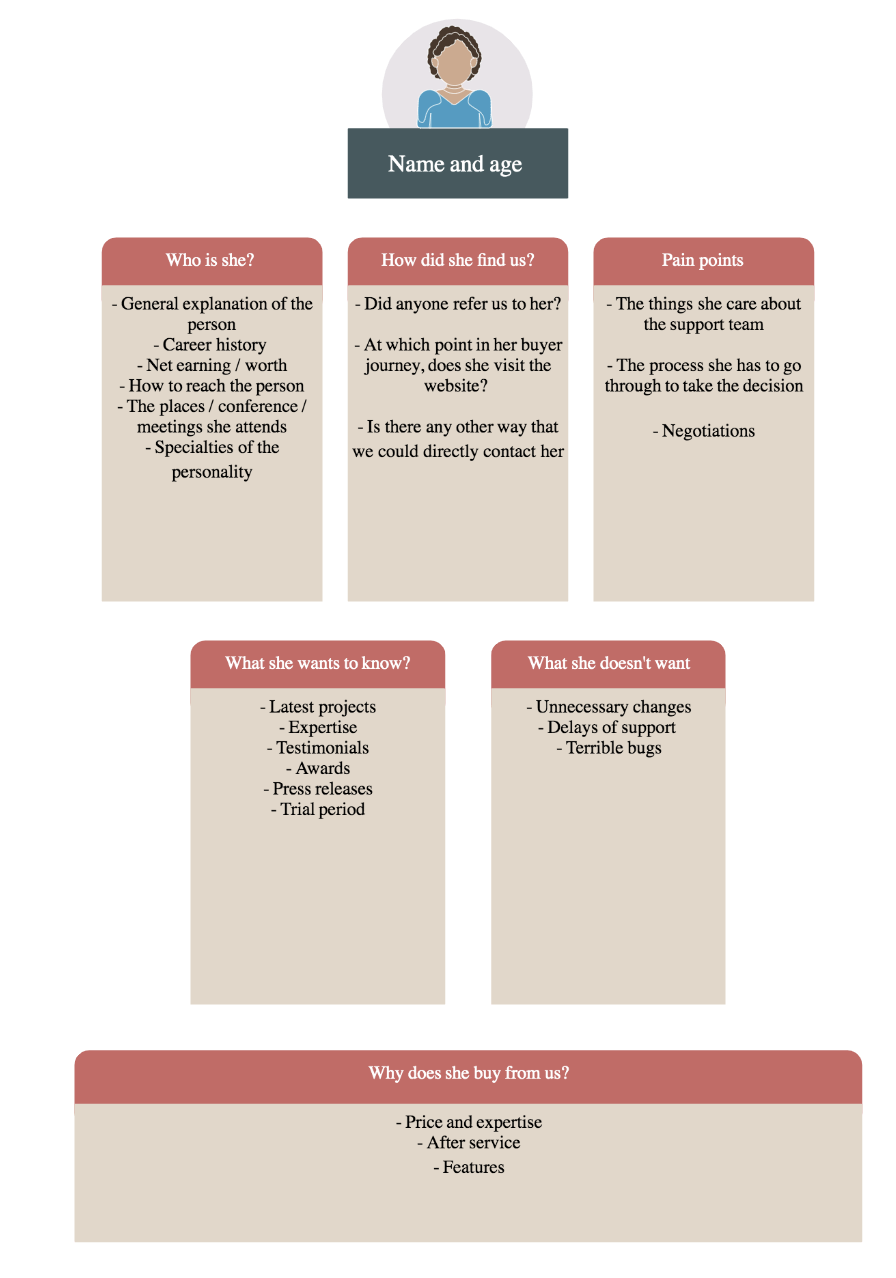
Creately’s customer profile template is easy to fill. You can use the first 5 boxes for listing your ideal customer’s attributes, and the last one for sharing a verdict or opinion on the findings.
The Five Abilities’ Customer Profile Template
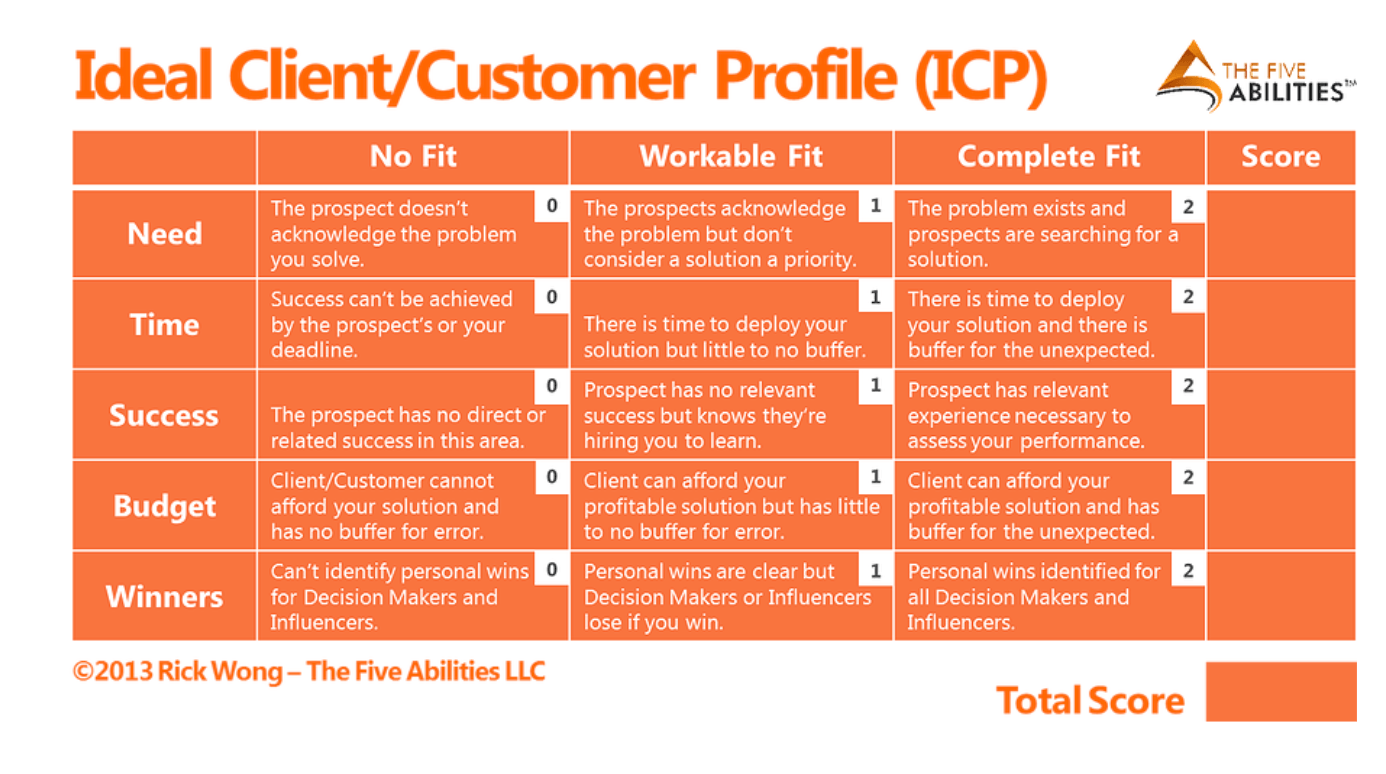
The Five Abilities’ customer profile template reminds us to narrow down our field of potential customers. While some businesses feel that everyone can benefit from their offerings, it doesn’t mean everyone is a good fit.
Conclusion
That’s it. You’ve learned everything you need to know about creating a customer profile.
Once you create one, make sure to share it with your business partners, employees, sales and marketing teams.
Doing so will give them a better idea about what kinds of strategies to adopt. Plus, they’ll be able to use them to guide their buyer personas and create even better promotional campaigns.
In summary, here are the five steps to build a customer profile:
- Identify your best customers
- Make a list of their notable attributes
- Create surveys on specific customer traits
- Extract customer data from your online channels
- Fill in your customer profile template
Have you created a customer profile for your business? Let us know in the comments below.






